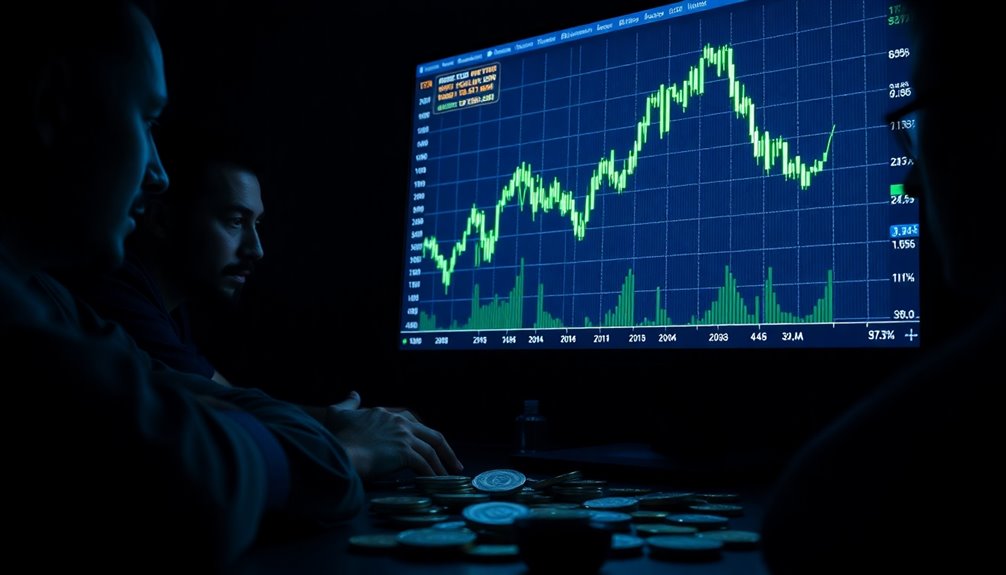Bitcoin's recent surge back above $98,000 comes after a dip to a 14-day low, driven by increased buying from Coinbase whales. This activity signals a potential shift in market sentiment despite overall bearish trends and regulatory uncertainties. Long-term holders are maintaining their positions, hinting at resilience in the market. As you explore further, you'll uncover the factors influencing price fluctuations and what might lie ahead for Bitcoin.
Key Takeaways
- Bitcoin recovered to over $98,000 after hitting a 14-day low of $96,821, signaling potential bullish momentum.
- Increased accumulation by large investors, or "whales," suggests strong market interest and potential for price recovery.
- Despite overall bearish market sentiment, long-term holders remain steadfast, indicating possible resilience in Bitcoin's price.
- Regulatory clarity from the Trump administration could enhance institutional interest, further supporting Bitcoin's price movement.
- Technical indicators show that Bitcoin is nearing a demand zone around $90,000, attracting mild buying pressure.

Bitcoin's recent price fluctuations have caught the attention of investors, as it bounced back above $98,000 after dipping to a 14-day low of $96,821 amid escalating US-Canada trade tensions. This volatility has stirred significant interest, particularly from large investors, often referred to as "whales," who've ramped up their accumulation of Bitcoin. Their increased buying activity is a potential signal of a bull market on the horizon.
Despite this recovery, Bitcoin's market capitalization has seen a decline from $2.10 trillion to $1.81 trillion in just a few days. This drop reflects the overall bearish sentiment in the market, driven by macroeconomic factors and the ongoing trade war. Retail investors, in contrast to the whales, have been selling off their holdings, contributing to the price fluctuations.
On-chain data shows that long-term holders remain resilient, hinting at a possible rebound in the near future. Technical analysis plays a crucial role in understanding Bitcoin's price movements. Currently, Bitcoin has lost the 20-day EMA and is approaching the 200-day EMA, suggesting continued bearish momentum. However, it has touched a demand zone around $90,000, which has attracted mild buying pressure.
Spikes in negative taker volume often precede price recoveries, indicating that a turnaround might be around the corner. Investor behavior is also influenced by the regulatory landscape. The Trump administration's push for regulatory clarity could bolster institutional interest in Bitcoin, further supporting its price.
Additionally, the Federal Reserve's decisions on interest rates continue to impact market dynamics, as global economic uncertainty weighs on investor confidence.
Conclusion
So, if you're riding the Bitcoin wave, now's the time to hang on tight! With Coinbase whales diving into the action, the price has soared past $98k, making it feel like the digital gold rush of a lifetime. This surge isn't just a blip; it's a signal that the crypto market is alive and kicking. Don't miss out on this thrilling journey—who knows where Bitcoin will take you next? The sky's the limit!









